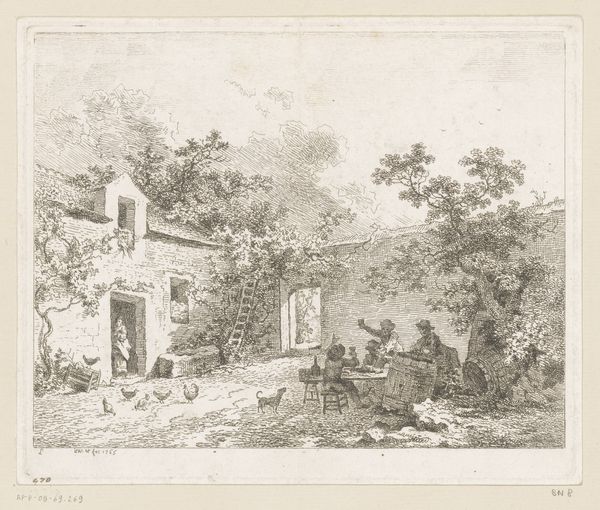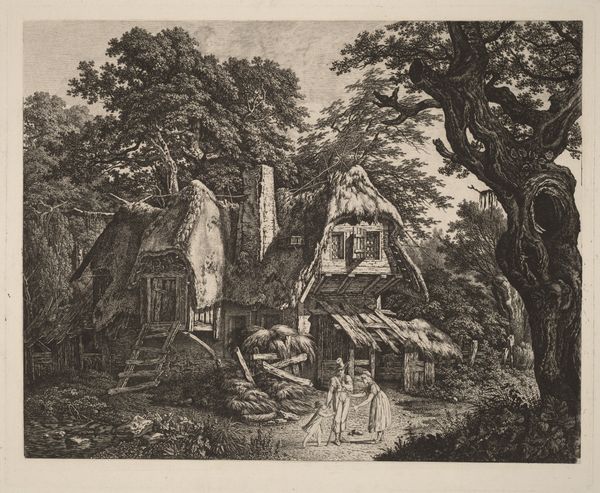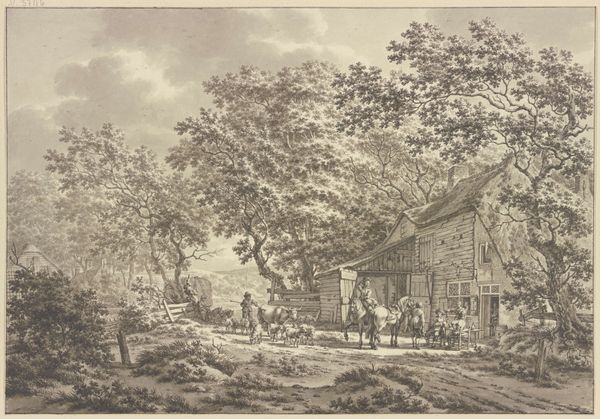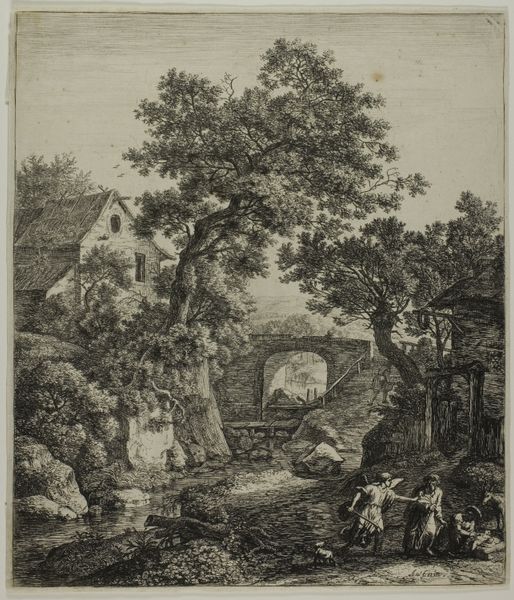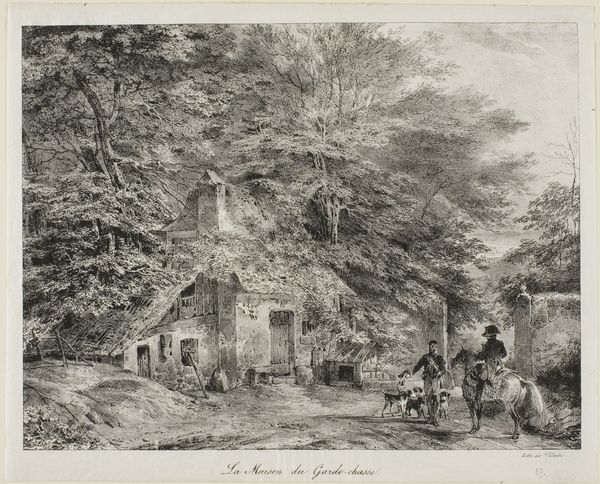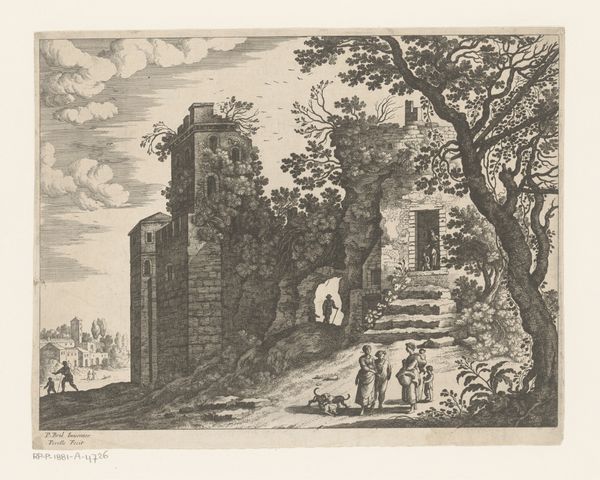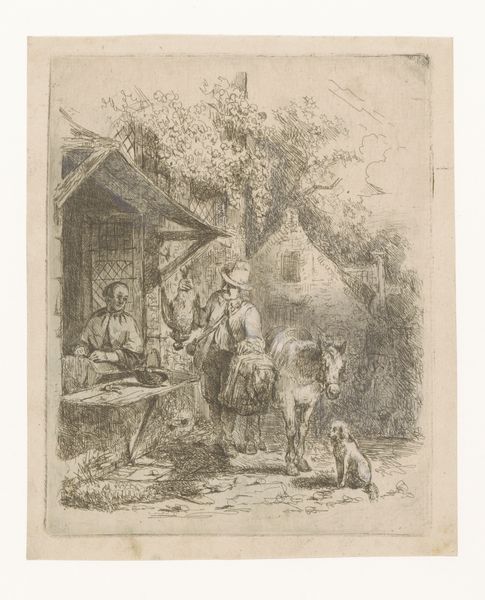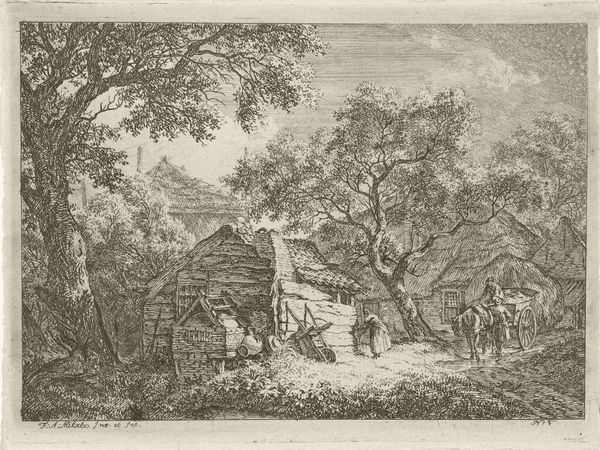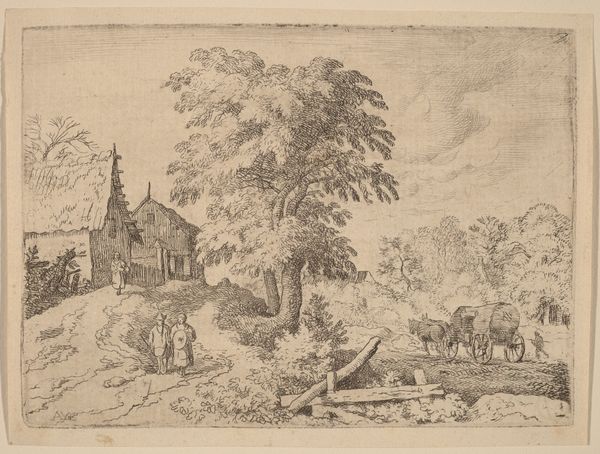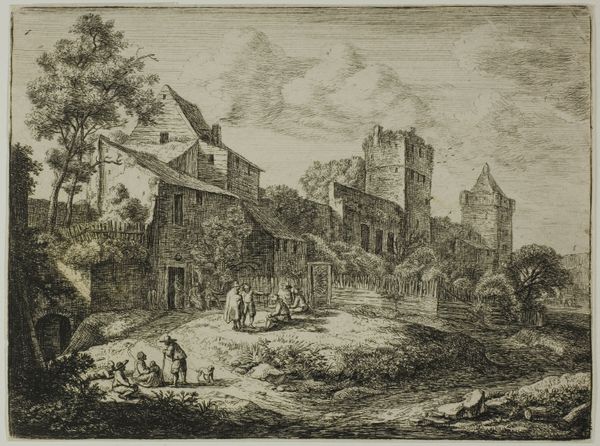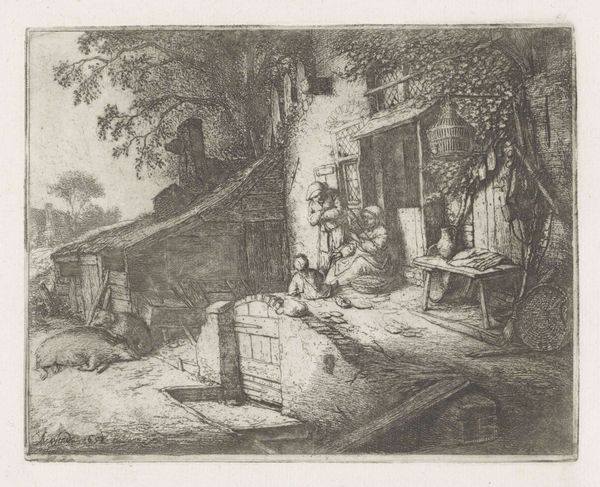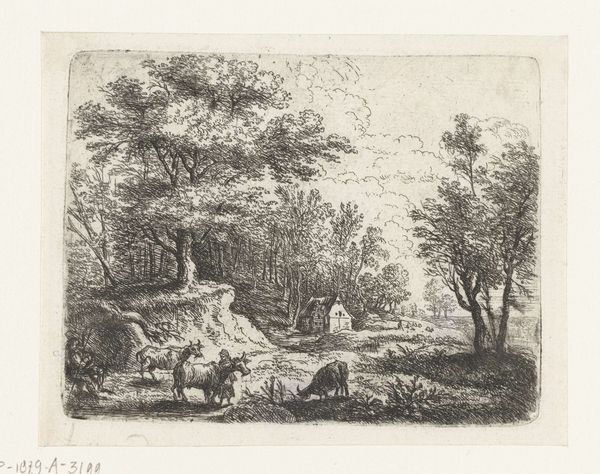
drawing, print, etching, architecture
#
drawing
#
narrative-art
# print
#
etching
#
human-figures
#
landscape
#
figuration
#
architecture
Dimensions: Plate: 5 1/4 × 6 15/16 in. (13.3 × 17.6 cm) Sheet: 6 1/2 × 8 3/16 in. (16.5 × 20.8 cm)
Copyright: Public Domain
Curator: Look at this fantastic etching by Allart van Everdingen. It’s called "The Fourth Spring" and dates sometime between 1621 and 1675. Editor: It’s… chaotic, almost? So much detail crammed into such a small space. The figures are tiny, and the landscape feels overpowering. It makes me wonder about the techniques employed. Curator: It’s a brilliant use of etching to convey a narrative scene, the kind of landscape the artist would have seen when he went to Scandinavia. The architecture gives it scale but is modest at the same time. Everdingen was very interested in those Nordic elements, their integration in everyday scenes. What do you think? Editor: I’m immediately drawn to how the work speaks about representation, and of nature as stage. Note the presence of architectural remains integrated within. Those elements certainly shape our reading of the piece and emphasize a controlled image making and reception. How did art like this function within Dutch society at the time? What expectations were in play regarding landscape depiction and its social role? Curator: Exactly! Everdingen made prints intended to be sold widely. His approach to making it was clever in many respects, given the growing middle classes, eager to consume images of both local and far-away scenes. It shows how an artistic work enters into social circulation and participates in shaping cultural perspectives of the day. Editor: Thinking about the broader social context in which this print was made helps explain the almost feverish, meticulous level of production that is represented, even embedded within it. Curator: Indeed, analyzing this etching shows how aesthetics and materials intertwined in ways that helped to create an appealing image and increase sales within a certain environment. Editor: A study on the reception of such works among a Dutch merchant class, would no doubt, be fascinating. Curator: Right! So this gives a different meaning when we study what an "original" might have been or supposed to be during those times. Editor: Well, thinking about this print from the perspective of artistic labor, reception, and material exchange certainly enriched our appreciation for the context. Curator: I concur; I now see a whole history revealed beneath what, on its surface, might seem only like an everyday landscape.
Comments
No comments
Be the first to comment and join the conversation on the ultimate creative platform.
